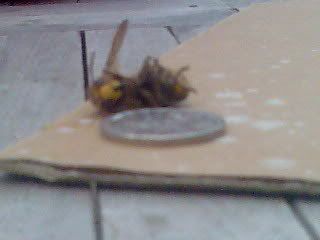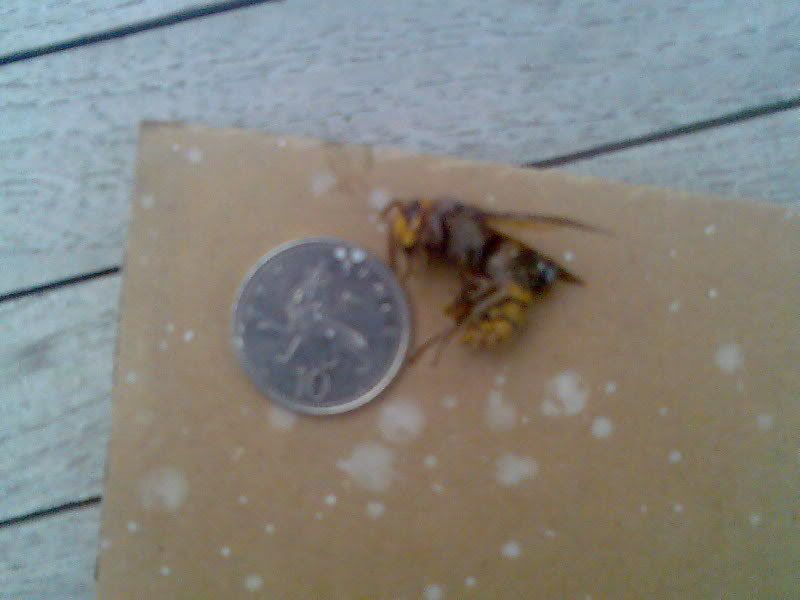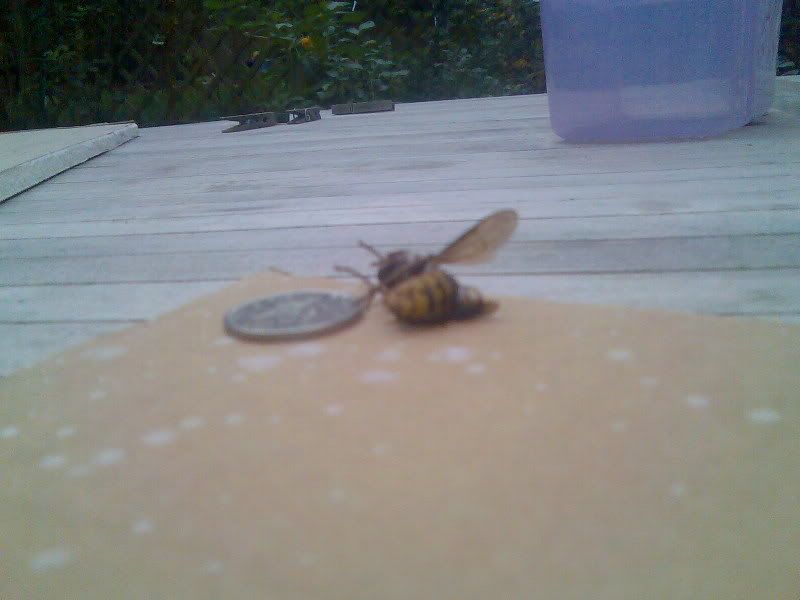You are using an out of date browser. It may not display this or other websites correctly.
You should upgrade or use an alternative browser.
You should upgrade or use an alternative browser.
Huge Wasp
- Thread starter Daveyboy
- Start date
More options
Thread starter's postsThat 10p is actually 10 miles wide.Ripper^ said:doesn't look that big
edit: thought that was a 5p
mrdbristol said:Ahh the " Coin Wasp " ( Waspus small changeius )
Unusual to find the 10 pence variety at this time of year.
any more info from your wildlife book today?
bledd. said:-if you find a dead wasp, can you still get nailed by the stinger?
lets find out, the stage is yours davey
bledd. said:any more info from your wildlife book today?
Testicular crabs ?
bledd. said:my god that's huge!
thought it was a 5p coin at first
-if you find a dead wasp, can you still get nailed by the stinger?
The ONLY wasp I ever got stung by was of the dead, crispy brown variety down the back of a car seat. Cigarette end went down there, was busy trying to mash what I thought was the embers, but was mashing a wasp into the end of my finger. Hurt, but don't think it would have been as strong as a fresh sting
Soldato
- Joined
- 24 Nov 2002
- Posts
- 16,379
- Location
- 38.744281°N 104.846806°W
bledd. said:that 2nd wasp is so big, its started developing human hands!
Nah - just having a dump.
pah that's a runt compared to this!squiffy said:pah that's a runt compared to this!


Although a handful of Asian giant hornets can easily defeat the defenses of honeybees, whose correspondingly small sting cannot inflict much damage against such a large predator as the giant hornet, the Japanese honeybee (Apis cerana japonica) has evolved an ingenious method of defending against the much larger predator.
When a hornet scout locates a Japanese honeybee hive and approaches the nest, the scout will emit specific pheromonal hunting signals. When the honeybees detect these pheromones, a hundred or so honeybees will gather near the entrance of the nest, apparently to draw the hornet further into the hive. As the hornet enters the nest, a large mob of about five hundred honeybees surround the hornet, completely covering it and preventing it from moving, and begin quickly vibrating their flight muscles. This has the effect of raising the temperature of the honeybee mass to 47 °C (117 °F). Though the honeybees can tolerate such a temperature, it is fatal to the intruder, which can handle a maximum temperature of about 45 °C (113 °F), and is effectively baked to death by the large mass of vibrating bees.
Thats some cool shizzle.
Yes dead wasp still = ouchbledd. said:my god that's huge!
thought it was a 5p coin at first
-if you find a dead wasp, can you still get nailed by the stinger?






